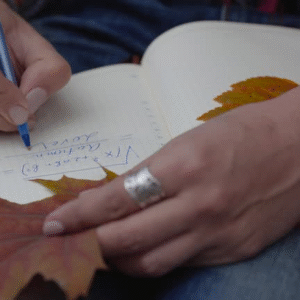No man is an island, entire of itself; every man is a piece of the continent, a part of the main.” John Donne
Give me a chance and I will paste in the heart of every man these words of John Donne. It is important to remember these things in order to foster growth in our communities.
One thing the world seems to be losing grip on is embracing our differences and leveraging our uniqueness to foster growth. In this article, we’ll discuss how celebrating diversity and working together can lead to collective progress.
Understanding Diversity
Diversity goes far beyond race and gender. It includes a wide range of characteristics that make each of us unique.
This can include race, gender, age, religion, disability, and even socio-economic background. Each aspect of diversity brings its own set of experiences and perspectives that contribute to the richness of our communities.
Division in Racial and Ethnic Diversity
Racial and ethnicdiversity are often the most visible forms of diversity. People from different races and ethnic backgrounds bring a variety of cultural traditions, languages, and histories to the table. As beautiful as this sounds, it has become an enemy of community growth.
It is becoming harder by the day to get a favor for just being human. We should draw inspiration from the likes of Nelson Mandela, Martin Luther King Jr, and Malalawho all stood for a cause that encouraged communal growth.

Disability Diversity
Disability diversity involves recognizing and valuing people with different physical, mental, and emotional abilities. This means creating an inclusive environment where everyone can participate and contribute.
When you understand disability diversity, you see the strengths and abilities of people rather than focusing on their limitations. Communities that embrace disability diversity become more innovative and resilient, as they find creative ways to include everyone.
Socio-Economic Diversity
Socio-economic diversity refers to the variety of economic and social conditions that people experience. This includes differences in income, education, occupation, and social status. Embracing socio-economic diversity means recognizing the challenges and barriers that people from different backgrounds face.
By addressing these issues, you can create a more equitable community where everyone has the opportunity to thrive. Socio-economic diversity contributes to community growth by fostering empathy and understanding among different social groups.
Religious Diversity
Religious diversity adds another layer of richness to our communities. People from different religious backgrounds bring their own beliefs, traditions, and practices.
When you embrace religious diversity, you create a space where everyone can freely express their faith and learn from one another. This not only fosters mutual respect but also promotes peace and tolerance.
By understanding and valuing religious diversity, you contribute to a more harmonious community where everyone feels accepted.
Cultural Diversity
Cultural diversity encompasses the variety of cultural expressions and practices within a community. This can include music, art, food, language, and traditions. When you celebrate cultural diversity, you get to experience a world of creativity and expression.
This not only makes your community more vibrant and interesting but also helps in community growth by fostering a deeper understanding and appreciation of different cultures. By embracing cultural diversity, you contribute to a richer, more dynamic community life.
Why Diversity Matters for Community Growth
Diversity matters because it makes our communities stronger, more resilient, and more innovative. When you embrace diversity in all its forms, you create a space where everyone feels valued and respected.
This leads to increased collaboration and creativity, as people from different backgrounds bring their unique perspectives to the table. By understanding and valuing diversity, you contribute to the overall growth and well-being of your community.

5 Ways to Foster Community Growth Through Diversity
1. Celebrate Cultural Events and Traditions
- Attend and Participate: Engage in cultural events and celebrations of different groups within and outside the community.
- Learn and Share: Take the opportunity to learn about and share the significance of these traditions with others, promoting understanding and respect.
2. Encourage Inclusive Activities
- Join Diverse Groups: Participate in clubs, sports teams, or community organizations that include people from various backgrounds.
- Organize Inclusive Events: Help organize community events that are welcoming to everyone, regardless of their background, ensuring activities are accessible and inclusive.
Engage in Open Dialogue
- Listen Actively: Make an effort to listen to the experiences and perspectives of people from different backgrounds.
- Speak Up: Share your own experiences and perspectives, fostering an environment where open, respectful dialogue is encouraged.
4. Volunteer and Collaborate
- Volunteer Together: Join community service projects that bring together people from diverse backgrounds to work towards a common goal.
- Collaborate on Initiatives: Partner with community members from different backgrounds on initiatives that address local issues, leveraging diverse perspectives and skill
5. Use Social Media to Promote Diversity
Social mediais a powerful tool for promoting diversity and fostering community growth. Unfortunately, it has recently become a tool for bullying but you can change the narrative and use social media platforms to share stories, highlight diverse community members, and promote inclusive events.
By using hashtags and creating content that celebrates diversity, you can reach a wider audience and encourage more people to get involved. Social media can also be a platform for important discussions about diversity. Engaging in these conversations helps create a more informed community.
In Conclusion,
We all have a role to play to bring communal growth. Instead of making our uniqueness divide us, we can all use it to develop our communities.
It starts with how you communicate with each other, how you express your concerns, and what you say when you don’t accept the opinion of the other person.












